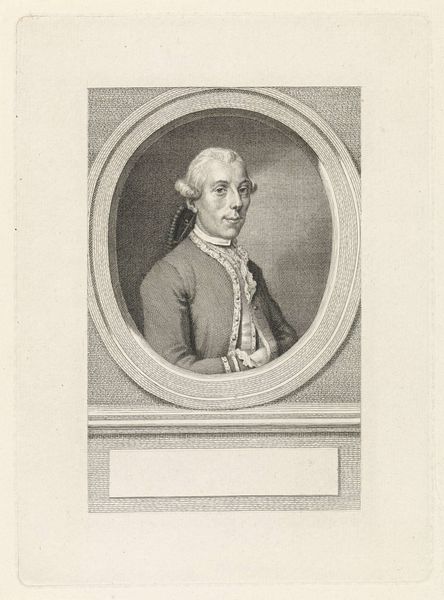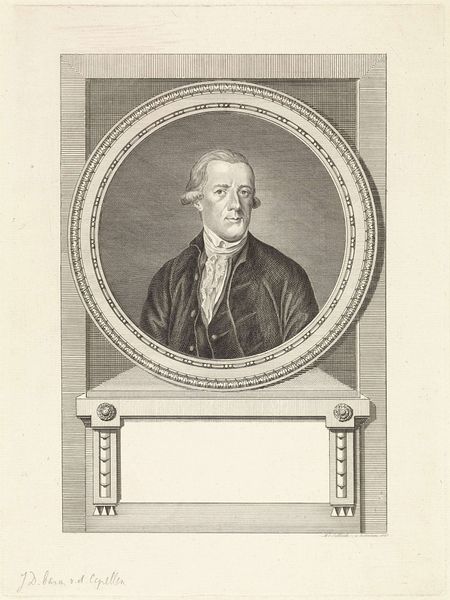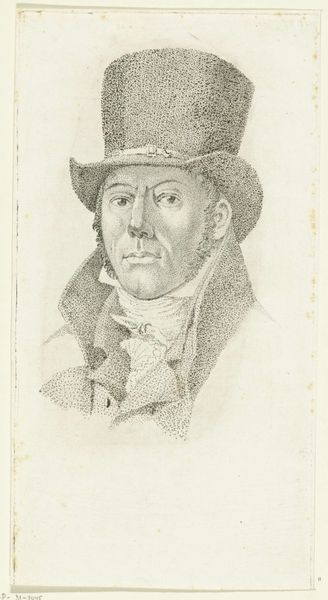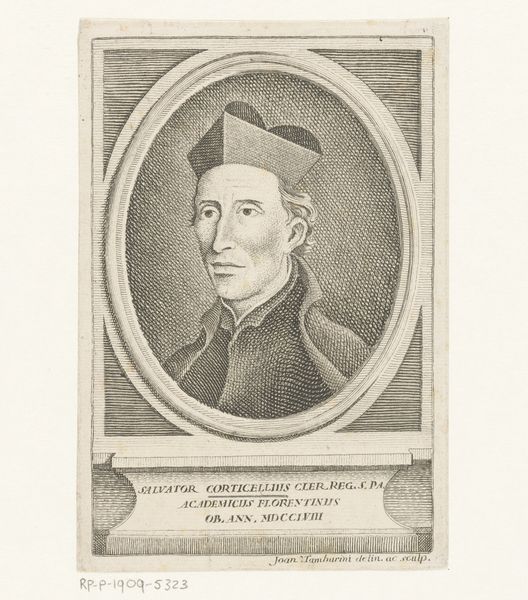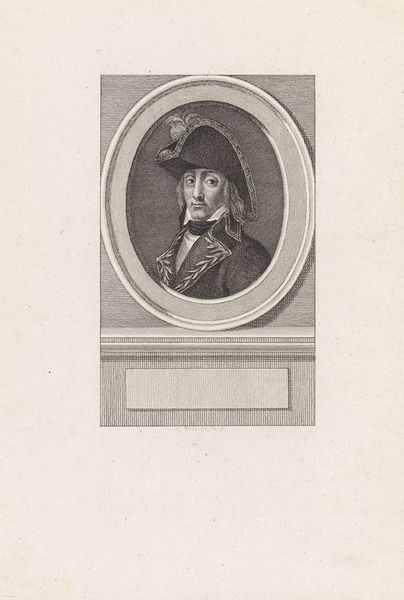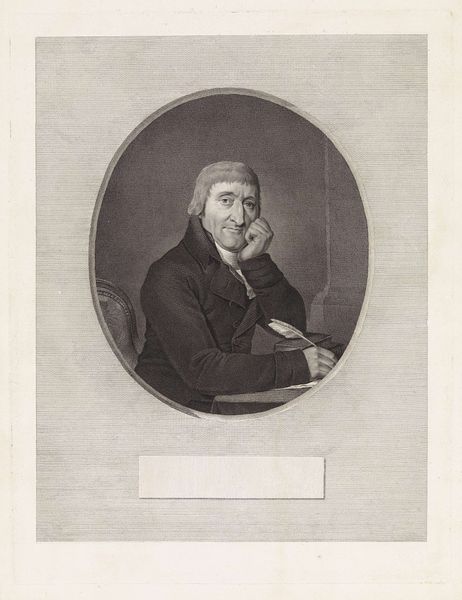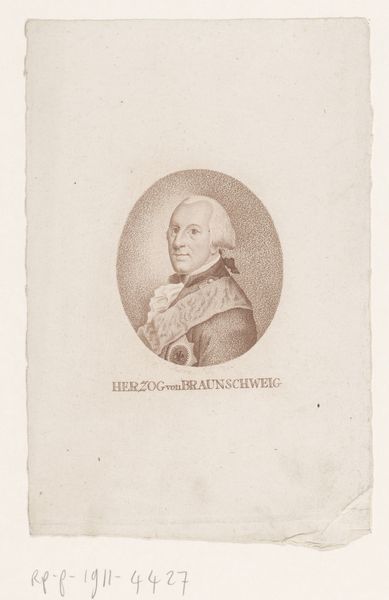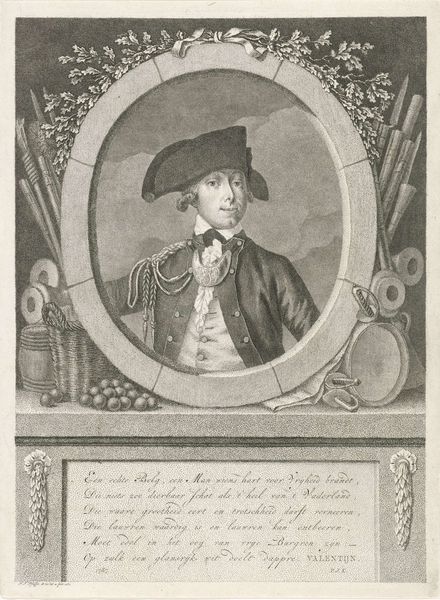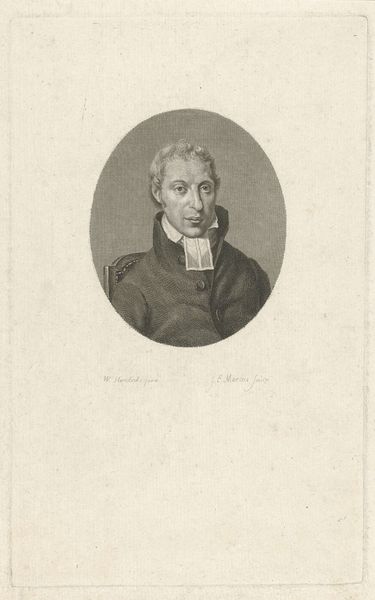
Dimensions: height 236 mm, width 154 mm
Copyright: Rijks Museum: Open Domain
This portrait of Jacob van Dyk was made by Reinier Vinkeles, and it's an engraving. This means that the image wasn’t drawn directly, but instead incised into a metal plate, which was then inked and printed. Look closely, and you'll see the incredibly fine lines that define the face, clothing, and even the background texture. These lines weren't easy to create. Vinkeles would have used a tool called a burin to carve into the metal, requiring immense skill and precision. The depth and spacing of each line determine the tones, with denser lines creating darker areas and more delicate lines suggesting highlights. Consider the labor involved in this process. Each print pulled from the plate represents hours of meticulous work. In a world before photography, these kinds of prints were crucial for disseminating images and ideas. They brought art and information to a wider audience, connecting to the wider social issues of labor, politics, and consumption. It's important to consider these processes when we view art. It allows us to understand its full meaning, challenging traditional distinctions between fine art and craft.
Comments
No comments
Be the first to comment and join the conversation on the ultimate creative platform.
